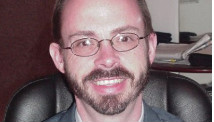TOKYO (Reuters) - Asian shares declined on Tuesday and the euro hit its lowest in nearly seven weeks against the dollar as an apparently deadlocked election in Italy raised the specter of a resurgent euro zone debt crisis.
Italy's main FTSE MIB <.ftmib>stock market index is expected to open down 2.5 percent, while other European markets are also seen slumping with financial spreadbetters predicting London's FTSE 100 <.ftse>, Paris's CAC-40 <.fchi> and Frankfurt's DAX <.gdaxi> would open down as much as 2.6 percent. U.S. stock futures were flat to suggest a cautious Wall Street start. <.l><.eu><.n/>
"There's a possibility that the Italians might be heading back to the polls. In the short term, investors and traders don't like the uncertainty," said Ben Le Brun, market analyst at OptionsXpress in Sydney.
Italy's centre-left coalition will win a majority in the lower house of parliament but the upper house will be deadlocked, the Interior Ministry said on Tuesday after almost all votes were counted. No party or coalition won a majority of seats in the Senate, which a government would need to pass legislation.
A split parliament in the euro zone's third-largest economy is seen as likely to paralyze any new government and potentially reignite the euro-zone debt crisis.
"Financial markets will now have to take at face value the idea that the protest vote can actually attain an overall majority in some parts of Europe's legislatures. This is indeed a worrying development and one that should rattle financial markets for some time to come," Westpac said in a note.
The yen and the euro stabilized and Asia's overall equities losses were less severe than U.S. benchmark Standard & Poor's 500 Index <.spx> which suffered its worst one-day percentage decline since November 7 with a 1.8 percent tumble on Monday.
The MSCI's broadest index of Asia-Pacific shares outside Japan <.miapj0000pus> skidded 0.9 percent. Australian shares <.axjo> slipped 1 percent, South Korean shares <.ks11> eased 0.4 percent while Hong Kong <.hsi> shed 0.8 percent to test a new 2012 low. Shanghai shares <.ssec> outperformed Asian peers after official media dispelled monetary tightening fears.
Southeast Asian shares, which have hit record highs recently, posted a larger drop, with the Philippines <.psi> plunging 1.2 percent after a record finish on Monday and Indonesian stocks tumbling 0.9 percent after also closing at a record on Monday.
U.S. crude slid 0.8 percent to $92.34 a barrel and Brent fell 0.7 percent to $113.61.
Spot gold inched down 0.2 percent to $1,591.01 an ounce, but London copper edged up 0.3 percent to $7,862 a metric ton.
"Volatile overnight markets discouraged those who had not been able to buy at the dips, while a lack of clear direction as well as growing risks have also reduced incentives for investors to venture out into the markets," said Tetsu Emori, a commodities fund manager at Astmax Investments in Tokyo.
YEN FIRMING HALTS
The yen resumed its retreat after firming sharply on Monday when nervousness about Italy exposed the yen to sharp reversals from its recent steep losses on bets of aggressive reflationary monetary policy in Japan.
The yen traded down 0.2 percent against the dollar at 91.93 after gaining 2 percent to 90.85 on Monday from its intraday low of 94.77 touched earlier in the day, its lowest since May 2010. The yen was also down 0.3 percent against the euro to 119.99 after jumping more than 3 percent to 118.74 on Monday from its day's low of 125.36.
The yen's overnight appreciation hit Japan's Nikkei stock average, with the index <.n225> tumbling 2.3 percent after closing at a 53-month high the day before. <.t/>
Traders said the plunge in the dollar and the euro against the Japanese currency has provided fresh opportunities to buy these currencies against the yen, with many market players still seeing a weak yen trend continuing.
But the euro fell to its lowest in nearly seven weeks at $1.3042 on jitters that political gridlock in Italy will hamper the country's efforts to reform and slash its debts.
"Uncertainty over the Italian election outcome and its impact will certainty keep the euro under strong pressure for some time," said Yuji Saito, director of foreign exchange at Credit Agricole in Tokyo.
"A safety net has been provided over the past year in the euro zone and given the size of Italy's economy, I doubt that the situation will turn into a disaster, but we need to carefully monitor developments. It revives memories of risks in the euro zone," Saito added.
The focus will now be on an Italian treasury bill auction on Tuesday when borrowing costs could rise, given the Senate election result.
Investors also await testimony later in the day from Federal Reserve Chairman Ben Bernanke for further clues to when the Fed intends to slow down or stop its bond-buying program.
Financial markets were rattled last week by minutes of the Fed's January meeting showing some Fed officials were mulling scaling back its strong monetary stimulus earlier than expected.
Dennis Lockhart, president of the Federal Reserve Bank of Atlanta, said on Monday that U.S. economic growth could surpass expectations this year, but an anemic labor market requires ongoing support from monetary policy.
The United States also faces downside risks to its economy if $85 billion in government-wide "sequestration" spending cuts go ahead on March 1.
(Additional reporting by Manolo SerapiThuy Ong in Sydney; Editing by Eric Meijer)

